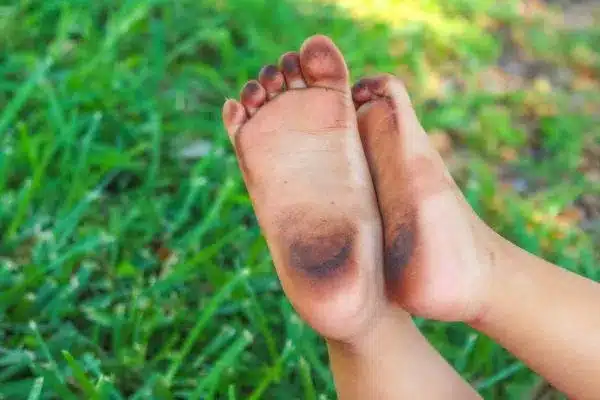Sever’s Disease, also known as calcaneal apophysitis, is a common cause of heel pain in growing children, particularly those aged 8 to 14. This condition occurs when the growth plate in the heel becomes inflamed, leading to discomfort and often affecting a child’s ability to participate in sports and other activities. Understanding the symptoms, causes, and treatment options for Sever’s Disease is crucial for parents and caregivers.
What Is Sever’s Disease?
Sever’s Disease is an overuse injury that affects the heel bone (calcaneus) during periods of rapid growth. The condition arises from the repetitive stress placed on the growth plate at the back of the heel, which can occur due to increased physical activity or sports participation. As children grow, their bones develop faster than their muscles and tendons, leading to tightness and strain on the heel.
Causes of Sever’s Disease
Several factors contribute to the development of Sever’s Disease:
- Growth Spurts: During growth spurts, children’s bones grow quickly, which can cause the tendons to become tight and put stress on the growth plate.
- High-Impact Activities: Activities that involve running, jumping, and sudden changes in direction can increase the risk of heel pain due to repetitive stress on the heel.
- Foot Structure: Flat feet or high arches can affect how weight is distributed in the feet, leading to increased pressure on the heel.
- Improper Footwear: Shoes that lack support or cushioning can exacerbate heel pain, making it essential to choose appropriate footwear for active children.
Symptoms of Sever’s Disease
Recognising the symptoms of Sever’s Disease is vital for timely intervention. Common signs include:
- Heel Pain: Children typically experience pain at the back or bottom of the heel, which may worsen with activity and improve with rest.
- Tenderness: The heel may feel tender to the touch, and children may wince or complain when the area is pressed.
- Swelling: Mild swelling may occur around the heel, although it is often not severe.
- Difficulty Walking or Running: Children may limp or avoid putting weight on the affected heel, especially during sports or play.
Treatment and Management of Sever’s Disease
Effective treatment for Sever’s Disease focuses on relieving pain, reducing inflammation, and allowing the heel to heal. Here are the best approaches for managing this condition:
- Rest and Activity Modification: Encourage your child to take a break from high-impact activities, such as running or jumping, to allow the heel to recover. Low-impact activities like swimming or cycling can help maintain fitness without stressing the heel.
- Ice Therapy: Applying ice to the affected heel for 15-20 minutes after activity can help reduce swelling and relieve pain.
- Footwear: Ensure that your child wears well-fitting shoes with adequate arch support and cushioning. Avoid flip-flops or worn-out shoes, as they can aggravate the condition.
- Stretching Exercises: Gentle stretching exercises for the calf muscles and Achilles tendon can help alleviate tightness and reduce pressure on the heel. A podiatrist can recommend specific stretches suited for your child.
- Custom Orthotics: In some cases, custom orthotics may be recommended to provide additional support and cushioning for the feet, helping to redistribute pressure away from the heel.
- Over-the-Counter Pain Relief: Nonsteroidal anti-inflammatory drugs (NSAIDs) like ibuprofen or acetaminophen can help manage pain and reduce inflammation. Always consult with a healthcare professional before administering medication.
When to Seek Professional Help
If your child’s heel pain persists despite home care measures, it’s essential to consult a podiatrist. A thorough evaluation can rule out other conditions and ensure that your child receives appropriate treatment. In rare cases, severe pain may indicate a more serious underlying issue that requires further investigation.
Conclusion
Sever’s Disease is a common yet manageable condition that can cause significant discomfort for growing children. By understanding its causes and symptoms and implementing effective treatment strategies, parents can help their children navigate this phase with minimal disruption to their activities.
At Foot Focus, we specialise in pediatric podiatry and are dedicated to helping children achieve pain-free mobility. If your child is experiencing heel pain, don’t hesitate to reach out for expert care and personalised treatment options. Early intervention can make a significant difference in your child’s comfort and overall well-being.

